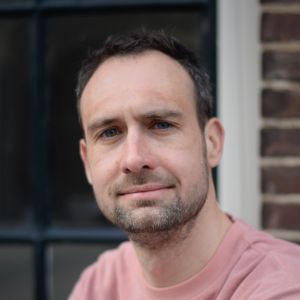You may have already come across the term Critical Power (CP) in relation to the Threshold Power. Sometimes functional threshold power (FTP) and Critical Power are used interchangeably, but that is not correct. Although both values are often close to each other, there is a clear difference. FTP is the power you can sustain for a maximum of one hour while CP is the power you can theoretically sustain for much longer. Critical Power is the lower limit (or horizontal asymptote) of someone’s power curve. To explain how this works we must first explain what a power curve is.
Mean maximal power curve.
Mean Maximal Power (MMP) is the amount of power you can produce for a given time. In 10 seconds you can produce more power than you can in 1 minute or longer. Using an MMP model it is possible to get an indication of how much energy can be released from which energy system per unit of time.
To produce energy the human body has 3 different energy systems at its disposal. The goal of all these systems is always to release ATP (adenosine triphosphate), because this is the energy you can actually use to run/ride, etcetera.
The three energy systems.
These various energy systems each have their peculiarities as described below:
- Creatine phosphate system: also called the sprint system. This form of energy is stored in the muscles and is therefore immediately available. It allows you to release a lot of power very quickly. But after 8-15 seconds this energy system is depleted and you will see a clear decrease in power. It is especially important during sprints.
- Anaerobic: The anaerobic system is good at releasing energy relatively quickly, it does this by burning glycogen without the use of oxygen. This process is still quite fast which makes it useful for short efforts. Think, for example, of a viaduct or short climb that you ride up at full speed. The disadvantage is that you acidify due to an increase in H+ ions. These ions literally cause acidification of the muscles, which decreases the function and forces you to reduce your intensity at some point.
- Aerobic: The aerobic system releases energy by burning fats and carbohydrates with oxygen. It is a relatively slow system but can be maintained for a long time as long as sufficient fuel is added. The carbohydrates stored in the body can provide energy for 1-1.5h of intensive effort, the energy you can get from body fats is enough for a few days of effort. Also for very skinny athletes! This energy system is therefore suited to long duration efforts.
Of course, all these energy systems work together and side by side. Depending on what kind of effort you do, one system is more or less active. If we therefore chart all your best power readings per unit of time, it will look something like this.
How to make a power curve.
By doing a number of power tests it is possible to draw your power curve. You do this for example in an anaerobic field test, where you test your best power over 1 minute and 5 minutes. This simply means that after a good warm-up, you go all out in a 1-minute and 5-minute effort, with sufficient rest between both efforts. Based on these values we can calculate the curve and then derive your CP. Note that the more maximal efforts we have, for example also 8, 12, 20 and 40-minute maximal efforts, the more accurate the power curve will be.
Critical power is calculated by looking at where the graph flattens out, this so-called asymptote. CP stands for the aerobic energy that you can release, it corresponds to FTP but it is not quite the same. FTP is the actual power you can ride over 60 minutes, CP gives an indication of the size of your aerobic system and is therefore slightly lower.
The area above the critical power line.
The area above CP is called AWC (anaerobic work capacity), which reflects the anaerobic system. This is a tank of energy that can be drained over varying lengths of time, from 1 minute to 20 minutes. In fact, it is a tank of Joules (energy) that you can spread out over a period of time. When the tank is completely empty you can fall back on Critical Power. Some comments should be added here. This is a highly theoretical model that describes the reality and functioning of systems quite well, but the real life practice is always more stubborn. We explain Anaerobic Work Capacity here in another blog.
What can you do with it?
Imagine you do a 20-minute test and the result is 15W better than 3 months ago. Obviously you have improved over 20 minutes, but we do not know by how much your FTP has improved. It may be that your anaerobic tank has become larger and that you have improved just above your threshold power. As a result, your aerobic system may have increased by only 5W. It is therefore important to create a power curve by testing multiple peak values so you can make it a two- or more components model. By doing this it is possible to get a better indication of which energy system has improved after a period of training or on which energy system you should focus more in the run up to your goal events.
Conclusion.
Through the CP model it is possible to split your performance into two components; aerobic and anaerobic. This makes it easier to set and evaluate your training results. It is very important that you do this with someone who knows what he is doing and how to calculate, use and interpret the model.



